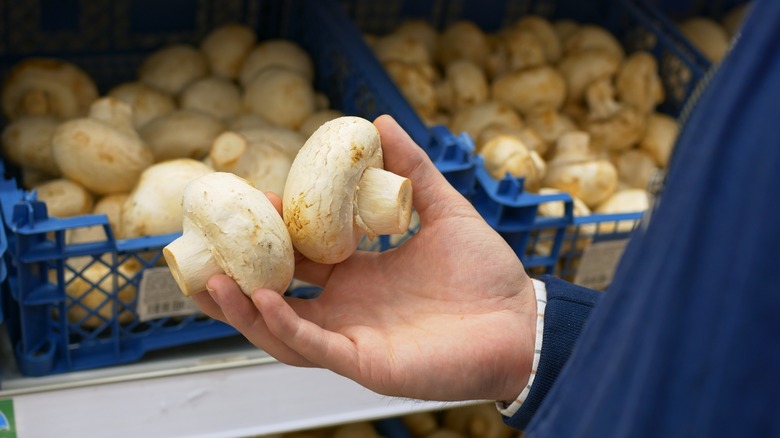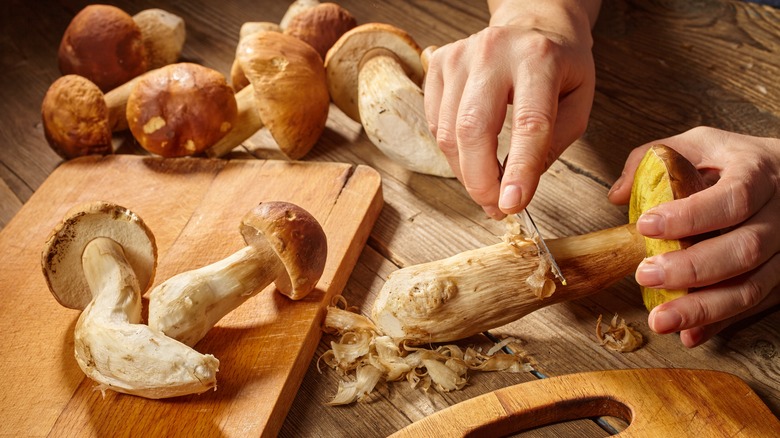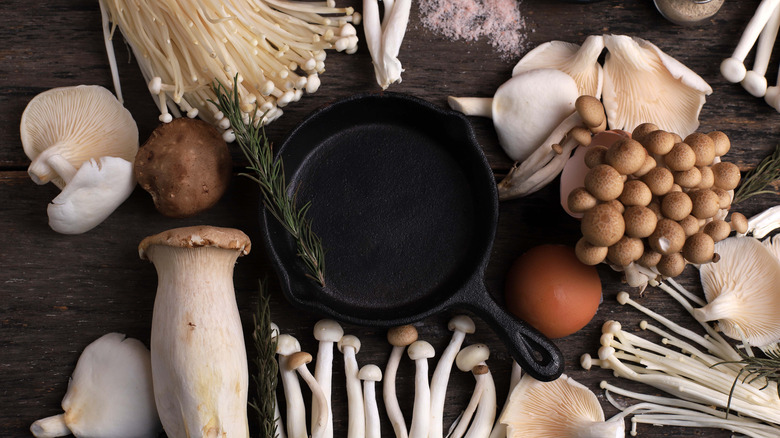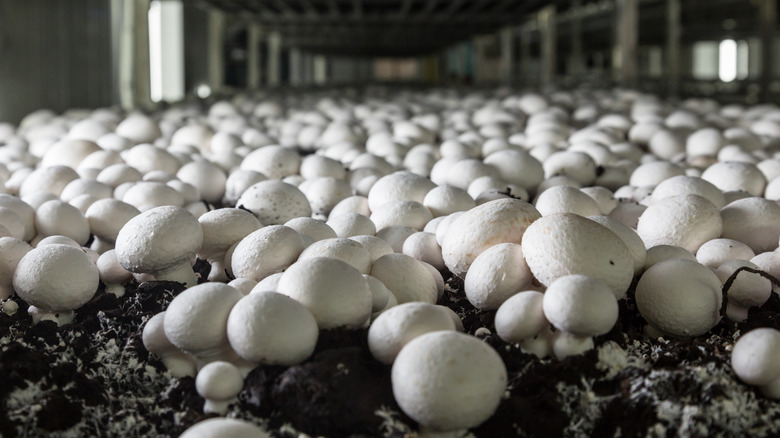Most Of The World's Mushrooms Come From This Country
Humans have an interesting relationship with mushrooms. We buy them at grocery stores and forage for them in the woods. Images of cute toadstool mushrooms with round red caps (ironically, a poisonous species, according to PBS) often appear in fairy tale books alongside forest critters and fairies. Some people love to eat them, while others wouldn't dare. For those who love a tasty mushroom, there are more than 2,000 kinds of edible mushrooms in the world, according to the Agricultural Marketing Resource Center (AGMRC). However, only a few are commonly consumed. Those most often found on grocery store shelves are cremini, portabella, shiitake, and oyster mushrooms.
On average, Americans ate about 2.6 pounds of mushrooms in 2021, per Statista. This amount has slowly declined since mushroom consumption peaked in 2016 at 3.98 pounds per person. About 40% of the world's cultivated mushrooms are young cremini or button mushrooms, according to PBS. And in 2015 in the U.S., these mushrooms comprised 61.2% of the mushrooms consumed (via Statista). However, the demand in the U.S. for less common species like shiitake and oyster mushrooms grew by 2% in 2019-2020, compared to the previous growing season, according to AGMRC, which amounted to sales of $67.4 million.
Eaten for centuries
Before mushrooms were a regular part of the human diet, they were considered to have medicinal properties by Asian cultures, per PBS. It wasn't until the French began to incorporate mushrooms into recipes that other cultures also started eating them — the Americans having caught on in the late 19th century. And the French and English are credited as being the first to cultivate mushrooms in the 17th century, according to Agriculture India. They were grown in underground quarries on horse manure, so it's perhaps little surprise that their perception as food took some time to catch on. Mushroom foraging groups first became popular in France, but then the notion spread to the U.S., according to PBS. And the hunting of wild mushrooms continues with many species, including the morel, which is a highly sought-after variety that's found in the early spring months, according to Mother Earth News.
Highly nutritious
Mushrooms appeal to many as a food source, whether as a tasty ingredient or meat alternative in a recipe. WebMD says they can be prepared in various ways or eaten raw. They suggest adding them to pizza or salads, cooking them with garlic and butter as a side dish, or preparing cream of mushroom soup.
The Mushroom Council touts the many benefits of mushrooms, saying they have zero cholesterol, no fat, more than a dozen vitamins, and minerals, and are full of antioxidants. They also add that mushrooms are the only natural source of vitamin D sold in a grocery store's produce section. In fact, mushrooms are one of the only sources of vitamin D that does not originate with an animal (via BBC Good Food).
Eating mushrooms can benefit immune health because of the selenium they contain. Selenium is an antioxidant that is known to prevent cells and tissues in the body from getting damaged. Not only do the fungi make a great meat alternative, you cffeven use them to help stretch your budget or reduce your meat consumption by adding them to minced meats (via Midwest Living).
The largest grower of mushrooms
China is far and away the largest grower of mushrooms, according to data from the Food and Agriculture Organization of the United Nations. In 2020, the country produced 40 million metric tons of mushrooms, followed by Japan with 471,810 tons, and the U.S. with 370,280 tons.
According to CGTN, the Chinese government has been assisting poor rural farmers with loans, which has helped these farmers immensely as well as the market for mushrooms. In the Chinese village of Wayaogou, 90% of the government agricultural loans were used to help mushroom businesses.
If all this talk of mushroom cultivation has you feeling left out, you can become a hobby mycologist with a small-scale home mushroom growing kit. Consumer Reports nutritionist Amy Keating says that growing your own at home has its benefits, from saving money to eating what you can be sure are pesticide-free mushrooms. So whether you grow your own mushrooms or buy them at a grocery store, enjoy the fungi raw, sauteed, or however you like.



